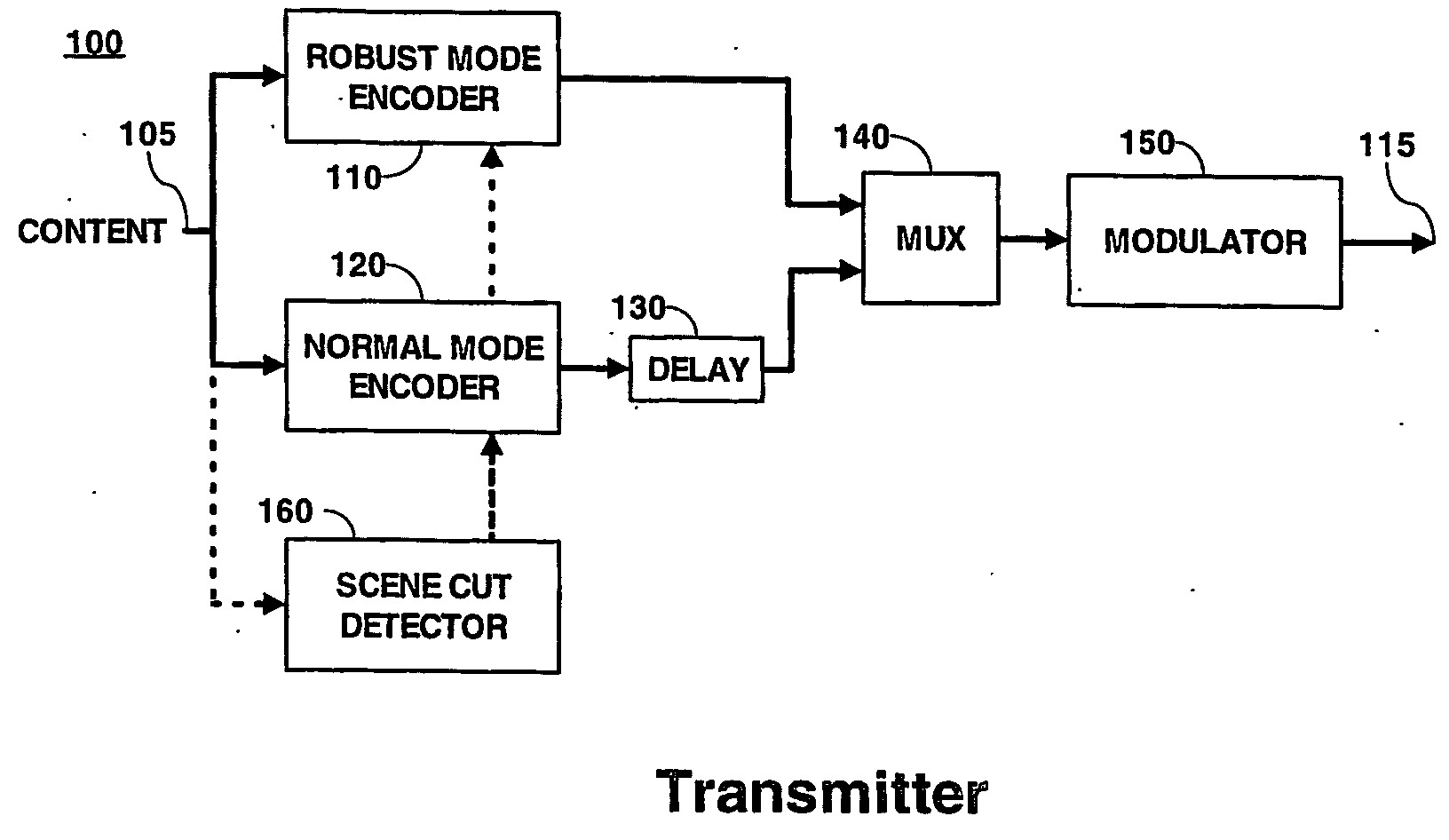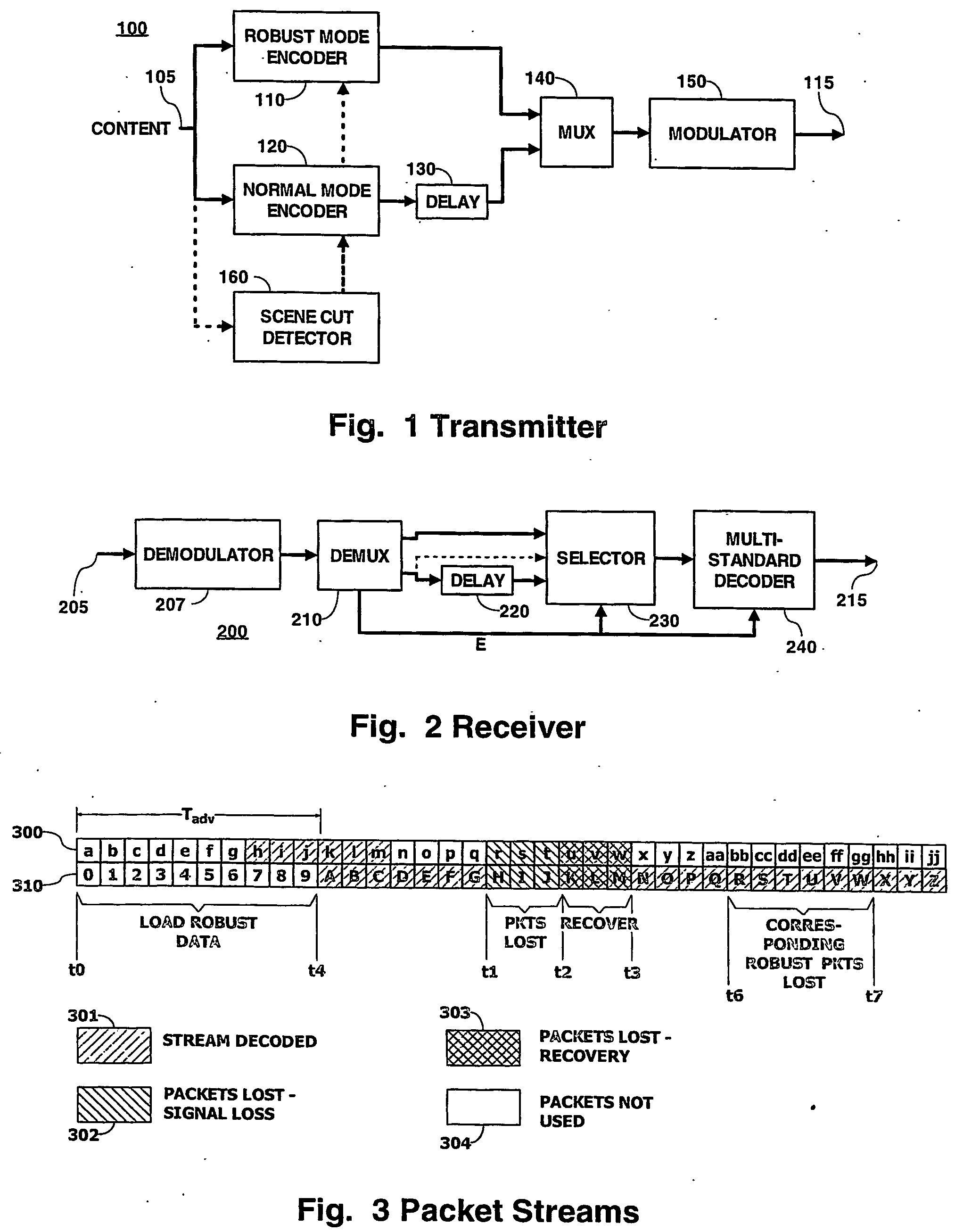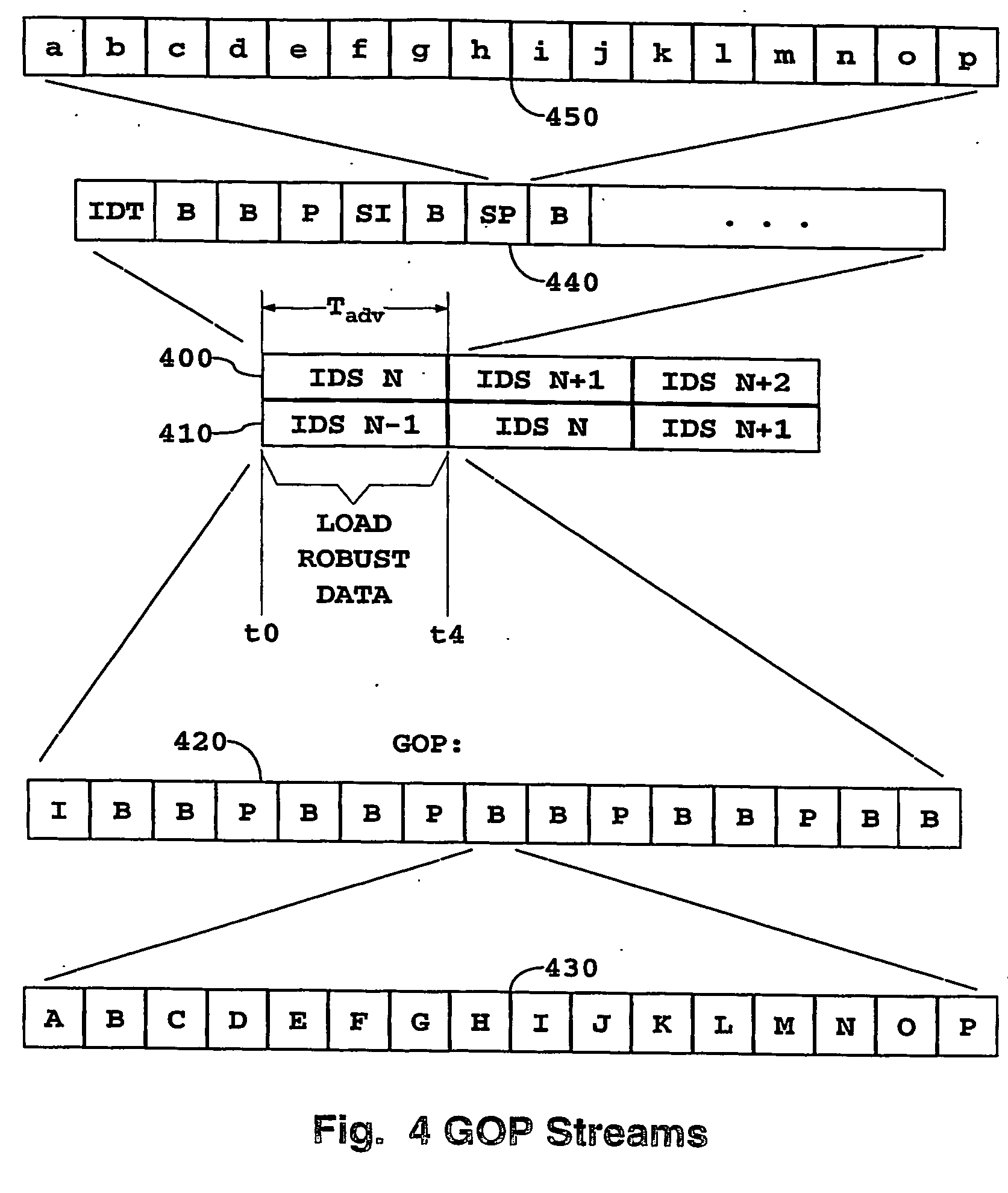Robust mode staggercasting without artifacts
a technology of artifacts and robust mode, applied in the field of staggercasting methods and apparatus, can solve the problems of receiver loss of signal, loss of synchronization of demodulator system, and inability to detect the signal in the communication channel,
- Summary
- Abstract
- Description
- Claims
- Application Information
AI Technical Summary
Benefits of technology
Problems solved by technology
Method used
Image
Examples
Embodiment Construction
[0025]FIG. 1 is a block diagram of a portion of a staggercasting transmitter 100 according to principles of the present invention. One skilled in the art will understand that other elements, not shown to simplify the figure, are needed for a complete transmitter. One skilled in the art will further understand what those elements are and how to select, design, implement and interconnect those other elements with the illustrated elements.
[0026] In FIG. 1, a source (not shown) of content, which in the illustrated embodiment may be a video image signal, audio sound image, program data, or any combination of these, provides a content representative signal to an input terminal 105 of the transmitter 100. The input terminal 105 is coupled to respective input terminals of a robust mode encoder 110 and a normal mode encoder 120. An output terminal of the robust mode encoder 110 is coupled to a first input terminal of a multiplexer 140. An output terminal of the normal mode encoder 120 is co...
PUM
 Login to View More
Login to View More Abstract
Description
Claims
Application Information
 Login to View More
Login to View More - R&D
- Intellectual Property
- Life Sciences
- Materials
- Tech Scout
- Unparalleled Data Quality
- Higher Quality Content
- 60% Fewer Hallucinations
Browse by: Latest US Patents, China's latest patents, Technical Efficacy Thesaurus, Application Domain, Technology Topic, Popular Technical Reports.
© 2025 PatSnap. All rights reserved.Legal|Privacy policy|Modern Slavery Act Transparency Statement|Sitemap|About US| Contact US: help@patsnap.com



